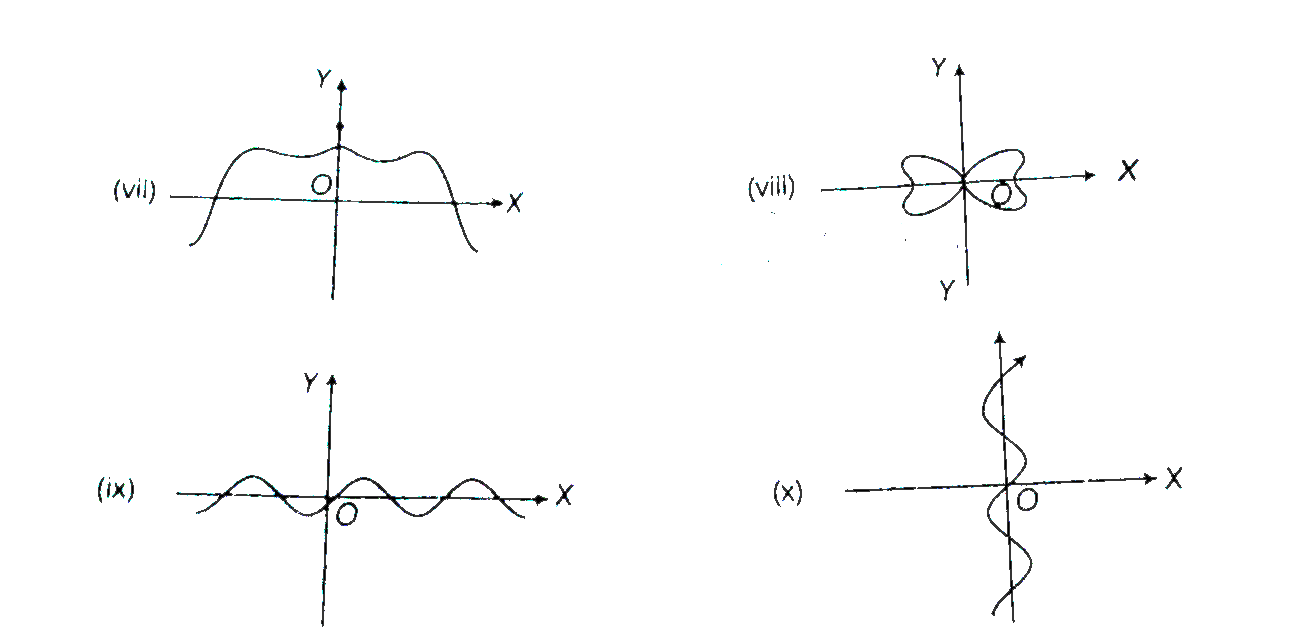Let A={1,2}, B={3,6} and f:A→B given by f(x)=x2+2 nd g:A→B given by g(x)=3x. Then we observe that f and g have the same domain and co-domain. Also we hve, f(1)=3=g(1)and f(2)=6=g(2). Hence f=g.Solution in Punjabi
The correct Answer is:f=g
Step by step video & image solution for Let A={1,2},\ B={3,6} and f: A->B given by f(x)=x^2+2\ n d\ g: A->B given by g(x)=3xdot Then we observe that f\ a n d\ g have the same domain and co-domain. Also we hve, f(1)=3=g(1)a n d\ f(2)=6=g(2)dot Hence f=gdot by Maths experts to help you in doubts & scoring excellent marks in Class 12 exams.
Updated on:21/07/2023Topper's Solved these Questions
- FUNCTIONSBOOK - ARIHANT MATHSCHAPTER - FUNCTIONSEXERCISE - Exercise For Session 1
5 Videos
- FUNCTIONSBOOK - ARIHANT MATHSCHAPTER - FUNCTIONSEXERCISE - Exercise For Session 2
6 Videos
- ESSENTIAL MATHEMATICAL TOOLS BOOK - ARIHANT MATHSCHAPTER - ESSENTIAL MATHEMATICAL TOOLS EXERCISE - Exercise (Single Integer Answer Type Questions)
3 Videos
- GRAPHICAL TRANSFORMATIONSBOOK - ARIHANT MATHSCHAPTER - GRAPHICAL TRANSFORMATIONSEXERCISE - Exercise (Questions Asked In Previous 13 Years Exam)
10 Videos
Similar Questions
Which of the following graphs are graphs of a function?


View SolutionThe domain of the function
f(x)=√x2−5x+6+√2x+8−x2 , is
View SolutionThe number of solutions of the equation |x−1|−|2x−5|=2x
View SolutionFind the number of solutions of the equation x21−|x−2|=1, graphically.
View SolutionIf g is the inverse of f and f'(x)=(1)/(2+x^(n)) then g'(x) is equal to A.2+x^(n) B.2+[f(x)]^(n) C.2+[g(x)]^(n) D.2-[g(x)]^(n)
View SolutionSuppose that f(x) is differentiable invertible function f′(x)≠0andh′(x)=f(x). Given that f(1)=f′(1)=1,h(1)=0 and g(x) is inverse of f(x) . Let G(x)=x2g(x)−xh(g(x))∀x∈R. Which of the following is/are correct? G′(1)=2 b. G′(1)=3 c.G1=2 d. G1=3
View SolutionIf f(a)=2,g(a)=-1,f'(a)=1, g'(a)=2 then the value of lim_(x->0) (f(x).g(a)-f(a).g(x))/(x-a)= (a) 5 (b) -5 (c) -6 (d) non of these
View SolutionLet f : R^+ ->R be defined as f(x)= x^2-x +2 and g : [1, 2]->[1,2] be defined as g(x) = [x]+1. Where [.] Fractional part function. If the domain and range of f(g(x)) are [a, b] and [c, d) then find the value of b/a + d/c.
View SolutionLet A={1,2}, B={3,6} and f:A→B given by f(x)=x2+2 and g:A→B given by g(x)=3x . Verify f=g .
View SolutionLe f:[0, ∞)→R and g:R→R be defined by f(x)=√x and g(x)=x. Find f+g, f−g, fg andfg.
View SolutionThe graphs of f and g are given.(a) State the value of f(-4) and g(3) (b) For what value of x is f(x) = g(x)?(c) Estimate the solution of the equation f(x)=-1.(d) On what interval is f decreasing? (e) State the domain and range of f.(f) State the domain and range of g.
View SolutionLet f,g,h be differentiable functions of x. if Δ=∣∣ ∣ ∣∣fgh(xf)'(xg)'(xh)'(x2f)''(x2g)''(x2h)''∣∣ ∣ ∣∣and,Δ'=∣∣ ∣ ∣∣fghf'g'h'(xnf'')'(xng'')'(xnh'')'∣∣ ∣ ∣∣, then n =
View SolutionSuppose that f(x) is differentiable invertible function f′(x)≠0andh′(x)=f(x). Given that f(1)=f′(1)=1,h(1)=0 and g(x) is inverse of f(x) . Let G(x)=x2g(x)−xh(g(x))∀x∈R. Which of the following is/are correct? G′(1)=2 b. G′(1)=3 c.G1=2 d. G1=3
View SolutionIf f(x)andg(f) are two differentiable functions and g(x)≠0 , then show trht f(x)g(x) is also differentiable ddx{f(x)g(x)}=g(x)dx{f(x)}−g(x)dx{g(x)}[g(x)]2
View SolutionLet A={1,2}, B={3,6} and f:A→B given by f(x)=x2+2 and g:A→B given by g(x)=3x . Verify f=g .
View SolutionLe f:[0, ∞)→R and g:R→R be defined by f(x)=√x and g(x)=x. Find f+g, f−g, fg andfg.
View Solution
